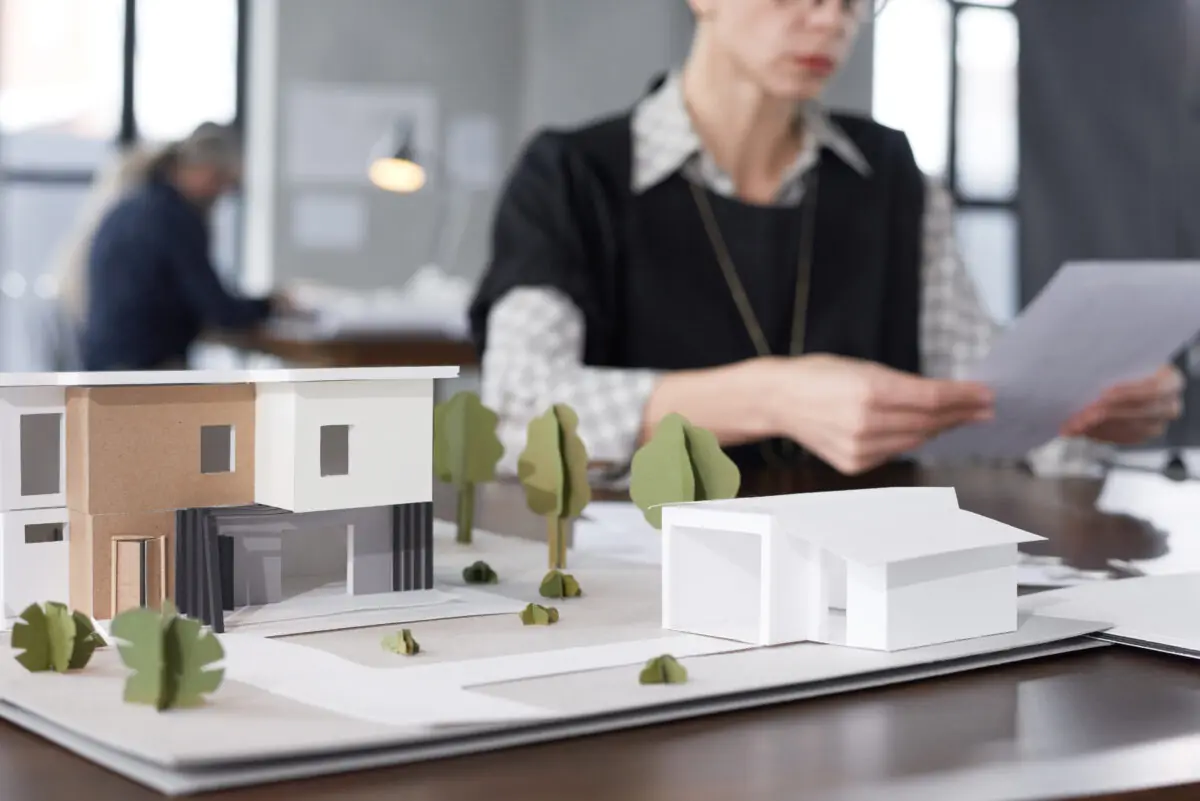
Offsite and modular construction shifts a massive part of the work from a muddy site to a tidy factory. That’s great for quality and speed, but it changes everything for structural detailing. When modules roll off the line, small gaps, loosened bolts, or an ambiguous connection detail can turn a neat factory finish into a site headache. This article guides designers through the practical detailing steps that make modular projects buildable, predictable, and clash-free, with a focus on clash-minimization practices, tolerance stacks, and a supplier coordination checklist that you can actually use.
Why it matters right now:
Modular and offsite construction are not niche. The U.S. modular market alone was valued at tens of billions in 2024, and offsite methods are outpacing certain parts of the broader construction industry as teams pursue speed, quality, and reduced site disruption.
That growth brings more designers into direct conversations with factories. National and industry guides now recommend clearer, earlier collaboration between project designers and manufacturers to realize the benefits of offsite construction.
The core detailing differences: what you must design for
Designing a factory-built module isn’t the same as designing a stick-built wall. Below are the four detailing areas that most commonly trip up projects, and what designers should do differently.
1. Tolerances and tolerance stacks (don’t let the numbers surprise you)
In a factory, you can get tight dimensional control, but modules will still change during lifting, transport, and on-site mating. The sum of those individual variances, the tolerance stack, is what kills fit-ups if you ignore it. A tolerance analysis is a straightforward spreadsheet exercise, but it should be part of the structural package from the outset.
Quick example (how stacks add up):
Imagine a module-to-module floor alignment that needs to be within ±10 mm at final assembly. Typical contributors might be:
- Factory frame tolerance: ±3 mm
- Transport distortion (bracing limits): ±5 mm
- Crane/lift placement variability: ±7 mm
- On-site setting/anchorage: ±3 mm
Add them step-by-step:
3 + 5 = 8; 8 + 7 = 15; 15 + 3 = 18 mm total possible error → that exceeds the ±10 mm requirement. That indicates the design or process must change (tighten tolerances, add alignment features, or allow in-field adjustments). See the calculation? It’s small math but huge consequences. (If you need a spreadsheet template for tolerance stacks, treat this as the first deliverable.)
Practical moves:
- Run a tolerance stack for every critical interface (floor-to-floor, façade-to-module, slab openings, MEP riser alignments).
- Convert “nice-to-have” clearances into mandatory spec limits where assembly depends on them.
- Specify alignment features (dowels, shear keys, bolted gussets) that capture tolerance, so installers don’t have to improvise.
2. Connections: design like a fabricator will load, lift, and bolt
A drawing that shows a generic “bolted connection” isn’t enough. Fabricators need:
- Clear load paths (who takes what load at what stage),
- Specific hardware (bolt grade, thread length, torque),
- Erection sequencing notes (temporary vs permanent connections).
Design for temporary conditions. A module may rely on temporary bracing during transport and then become structural when connected. Detail which members are temporary and describe how the transformation occurs, including bolt sizes, weld notes, and allowable field adjustments, all of which are clearly specified. Monash and other modular handbooks emphasize that connection detailing must reflect both fabrication and erection phases.
3. Transport, lifting, and handling loads
Modules experience different loads in transit than they do when they are part of the finished structure. Designers must specify:
- Transport envelope and weight limits,
- Lifting points and permitted load angles, and
- Local bracing to protect delicate features (windows, lightweight cladding).
A recent wave of heavy industrial modular projects, ranging from LNG skids to prefabricated plant modules, reveals both the benefits and drawbacks of this approach. Offsite construction saves time, but transport damage and coordination complexity increase if lifting and transport loads aren’t integrated into the structural detail set.
4. Interfaces with MEP, finishes, and the site
Offsite handles a significant portion of the MEP work within the factory. That’s a plus, but it means structural openings, penetrations, and embed plates must be placed to millimetre accuracy. Common practical safeguards:
- Shared reference datum between the design team and the factory (one single global coordinate system).
- Coordinate the exact position of penetrations in BIM and lock them before fabrication.
- Specify protective covers for penetrations during transport and lifting.
Clash-minimization: not just software, but process
Yes, run clash detection in BIM. But for modular projects, that’s table stakes; the real value comes from using clash tools to drive contracts, not just find model problems.
Best practices:
- Early, focused clash tests run module-to-module and module-to-foundation checks as soon as preliminary geometry exists. Don’t wait for CD drawings. Autodesk and other BIM authorities recommend iterative early checks to reduce downstream rework.
- Create a clash matrix, track clash type (hard/interference, clearance, sequencing), responsible party, resolution date, and verification method. Use this matrix as a contract deliverable.
- Agree interface tolerances in procurement, make the fabricator’s tolerances a contractual item tied to acceptance tests; don’t leave it to “usual industry practice.”
Use assembly sequencing (4D) to surface temporal clashes; modules that physically fit may still conflict in lift sequencing, crane reach, or staging areas. Model the erection sequence to reveal these early.
A practical supplier coordination checklist (copy, adapt, use)
Below is a working checklist designers can include in the tender/contract package for any modular project. Keep it tight; clearly assign responsibilities, and insist on confirmation before fabrication.
- Single project datum / coordinate origin and tolerance.
- Module manufacturing shop drawings (approval turnaround times).
- Fabrication tolerances (frame, floor, wall, and roof) and the verification method.
- List of lifting points, rated for intended lifts, with acceptance test requirements.
- Transport envelope and dimension limits; packaging and bracing methods.
- Connection library (standardized bolted/welded details, bolt grades, torque/inspection).
- MEP penetration register, freeze date, and coordinate sign-off procedure.
- Factory Acceptance Test (FAT) scope and witness requirements (who attends, sign-off criteria).
- QA/QC and 3rd-party checks (weld inspection, concrete strength, MEP testing).
- Erection / on-site acceptance procedure (shim strategy, torque inspection, sealing, and fire-stopping hand-off).
- BIM delivery and level-of-detail (LOD) requirements for as-built handover (for digital twin and facilities ops).
How to tighten tolerances without bankrupting the project
You can’t shrink every tolerance to zero, and it’s best not to try to do so. The goal is to target the critical interfaces and reduce risk where it’s most painful.
Actions that give big wins:
- Push precision to the factory for repetitive geometry (wall studs, module frames). The factory is where tight control is cheapest.
- Add mechanical alignment features (shear keys, dowels) that absorb minor errors. These cost little and save days on site.
- Specify adjustable connections (such as slotted holes or shims) where final alignment is required. Specify the acceptable range and describe the shim procedure in detail.
Use pre-assembly trials for atypical interfaces: build a mock-up module and test mating, lifting, and transport packaging before committing to the whole run.
Workflow & roles, who does what, and when
A simple timeline anyone can use:
- Pre-design: Select a modular approach (panel, volumetric, hybrid) and factory partners.
- Concept design: create module geometry and run initial tolerance stacks. Lock critical dimensions.
- Pre-construction: Issue shop-drawing package; run FAT and mock-ups. Coordinate crane/transport logistics.
- Fabrication: Monitor QC, resolve clashes, and sign off on joinery/connection libraries.
- Delivery & erection: Use the clash matrix and erection BIM model. Perform final QA and hand over the as-built model.
Best practice is to assign a single owner for module interfaces (designer or PM) who keeps the checklist moving and owns the clash matrix. This avoids the “everyone assumed someone else sorted it” problem.
Final thought, practical optimism
Offsite and modular construction tilts the table toward predictability and repeatability. But to get there, you must treat the design package as a fabrication manual, not just an aesthetic sketch. Run tolerance stacks, detail connections for both fabrication and erection. Use BIM, yes, but attach real QA and contractual teeth to what models show.
If you’d like, Uppteam can help translate your drawings into fabrication-ready details, including tolerance stack spreadsheets, shop drawing QA, BIM clash regimes tailored to modular workflows, and supplier coordination packs that factories will appreciate and site crews will thank you for. Ready to reduce those surprises between shop and site?

















